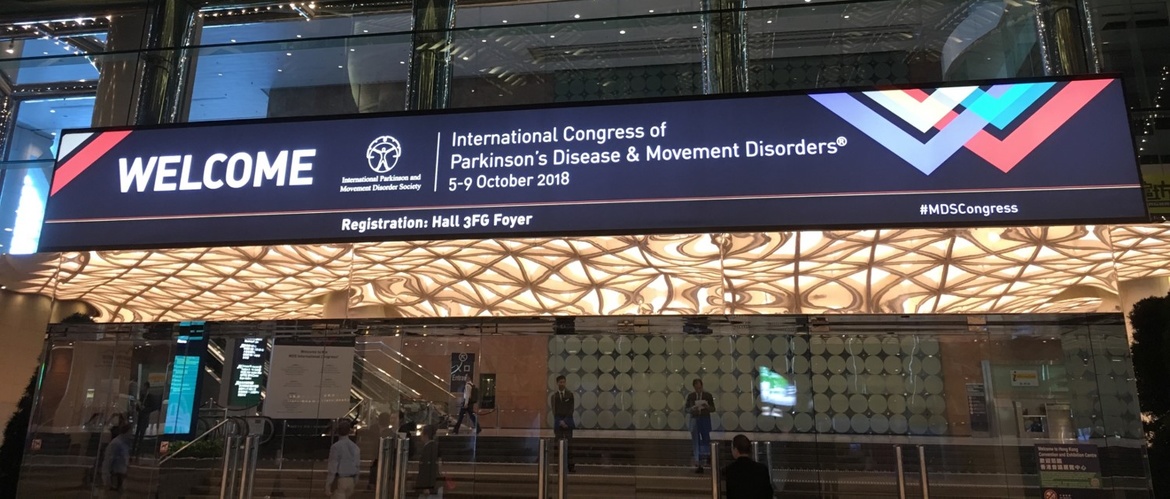
Choose a channel
Check out the different Progress in Mind content channels.

Progress in Mind

Parkinson’s disease is characterized by motor symptoms and a wide range of non-motor symptoms that vary over the stages of the disease as it progresses. Patients require a multitude of pharmacological and non-pharmacological interventions, including physical exercise, to control symptoms as best as possible.
In a plenary session at the MDS in Hong Kong, Olivier Rascol, University of Toulouse compared the multitude of treatment options and combinations in early Parkinson’s disease (PD) that a clinician is faced with, to a “sandwich of everything”.
Levodopa is after more than 50 years, still the gold standard for treatment of PD and is considered the most potent symptomatic antiparkinsonian drug. Concern over the fact that levodopa causes motor complications such as fluctuations and levodopa-induced dyskinesias (LIDs) has led to the practice of delaying levodopa treatment. However, as Professor Rascol pointed out, it might not be the timing of treatment that’s the major issue, but instead disease duration and the daily dose of levodopa.1,2 In the long run, there seems to be no sustained difference in motor complications or quality of life if initiating treatment with e.g. a dopamine agonist (DA) instead of levodopa.3
Combination therapy instead of monotherapy can allow for use of lower doses of levodopa, decreasing the risk for motor complications, such as dyskinesias
Combination therapy instead of monotherapy can allow for use of lower doses of levodopa, decreasing the risk for motor complications, such as LIDs. Various combination and timing strategies were discussed, combining levodopa, DAs, monoamine oxidase (MAO) B-inhibitors, an NMDA-receptor antagonist, and also physical exercise. Professor Rascol expressed hope for better drugs in the future and increased knowledge of disease phenotypes and genotypes, allowing for a personalized treatment approach.
Colleen Canning, University of Sydney, gave a presentation on the role of rehabilitation and exercise in the management of PD. The evidence base for physical, occupational, and speech therapy in PD has been growing steadily for the past 20 years.
There is now evidence, suggesting that high intensity exercise could be disease modifying
There is now evidence, suggesting that high intensity progressive resistance and aerobic exercise could be disease modifying, as shown by changes in the UPDRS motor score.4,5
Canning and colleagues undertook a six months randomized trial investigating a program for preventing falls that in the treatment group, in addition to usual care and falls prevention advice, included a minimally supervised exercise program, conducted three times a week.6 The intervention was effective and cost saving for the low disease severity subgroup, with significantly fewer falls and lower proportion of fallers, while the opposite was noted in the high disease severity subgroup.7 Professor Canning stated that this result highlights that “one size does not fit all”, and that it also provides a rationale for why exercise should be implemented early in people with PD.
Non-motor symptoms include, but are not limited to, depression, panic attacks, fatigue, bladder disturbances and pain, and can be equally, or more disabling than the motor symptoms
Finally, Anthony E Lang, University of Toronto provided an update on the management of later stage PD, and highlighted the very common non-motor symptoms that are associated with the OFF state.
These include depression, panic attacks, fatigue, bladder disturbances and pain, and can be equally, or more disabling than the motor symptoms. Professor Lang stated that the pathogenesis of these non-motor symptoms may be attributed to the chronic effects of levodopa and its method of administration, similar to dyskinesias. Various pharmacological strategies for extending the effect of levodopa could potentially ameliorate these symptoms in the future.